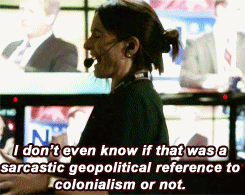I try, in general, to cast a critical eye upon ideas and information and opinions, and sometimes I am more successful at this and other times less successful. For genres of things where Societal Bullshit has often been at play in the past, I try to be extra skeptical about that thing. As a totally inconsequential example, I know that the Bachelor manipulates my views of all the women through editing; and I maintain a particular skepticism of the edits that people of color receive. (The, like, three that have ever been on that show.)
Similarly, I have decided upon a policy of increased skepticism in all future cases where policymakers and opinion-havers feel that it would be Best if women would just wear different clothes. I do not exclude from consideration the possibility that such an argument might have merit. But in general, history has taught me to be suspicious of people attempting to regulate ladies’ clothing. That suspicion is now my official policy.

Sahar Amer’s What Is Veiling? looks at the history and practice of veiling among Muslim women. The book’s primary message is that Muslim women veil differently and for different reasons in different places. If that seems obvious, well, it is. But Western rhetoric about Muslim women who veil tends to flatten out all those differences, and Amer’s goal is to truly educate the reader about the reasons women veil and think about veiling across the world.
One area that Amer highlights that I think would make a useful addition to our national discourse is the way historical precedent plays into all this. European nations who wanted to conquer other nations were allllll the tiiiiime meebling “oh but the women we must save them.” And then they came in and decided everything for everyone, generally in order to attain the most amount of economic gain.

So no huge surprise that critics of colonialism are suspicious of Western nations making the same claim again; particularly when — as is so often the case — they discount or ignore the voices of Muslim women who have chosen to veil and are ready to fight for their right to continue doing so.
[Muslim feminist] Amina Wadud writ[es] that, “the hijab of coercion and the hijab of choice look the same. The hijab of oppression and the hijab of liberation look the same. The hijab of deception and the hijab of integrity look the same. You can no more tell the extent of a Muslim woman’s sense of personal bodily integrity or piety from 45 inches of cloth than you can spot a fly on the wall at two thousand feet.”
Anyway, it’s an excellent and careful book, and it made me want to check out more in this series from UNC Press. If you have questions about regional differences in veiling, or scriptural and cultural bases for it, or where it’s becoming more and less common and why, Sahar Amer has you covered. Recommended!